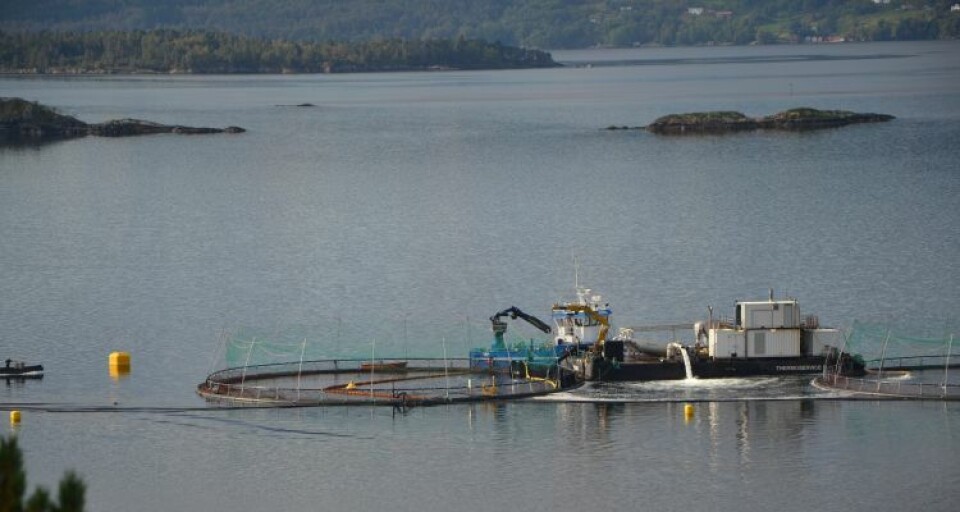
Concerns over Thermolicers
Sea lice appear to be developing tolerance to treatment methods such as Thermolicers, forcing some operators to increase the water temperatures used during delousing.
Not only does this risk the health of the fish during the treatment process, but it could also be leading to lice developing resistance to this promising treatment method.

“If it turns out that sea lice have actually accumulated a hereditary tolerance to hot water in some areas, this is as disturbing as the development of resistance to chemical agents,” Tor Einar Horsberg, professor of veterinary pharmacology at NMBU, explains to kyst.no
Thermolicers have become increasingly popular in the past two years. According to Steinsvik, which manufactures the devices, they have so far delivered over 30 machines for delousing both salmon and rainbow trout in Norway and abroad.
The fish are exposed to water warmed up to 34 degrees for 30 seconds, which leads to a 90% reduction in sea lice at all stages. According to the manufacturer, the machines have cleaned over a million tonnes of salmon in the last 12-months.
However, Kyst.no has recently received several reports that it has been necessary to increase the water temperature to obtain the expected effect. This does not surprise Professor Horsberg.
“With the widespread use of this measure in western Norway this year is likely to lead to a decrease in efficacy,” he says.
“We have heard of individual cases where treatments with hot water didn’t have the expected effect. Like with chemical treatments it seems that any temperature tolerant parasites survive treatment and pass their genes to the next generation,” Horsberg adds.
However, according to the professor, it’s too early to conclude if there is a hereditary increase in temperature tolerance.
“It takes several studies to determine this,” he observes, adding that, as far as he is aware, there have been no studies on sea lice temperature tolerance.
“But we have at NMBU started to develop a bioassay for temperatures to put in place an objective test method,” he reveals.
They expect to have basic data ready in the spring and will then distribute a test protocol.
Steinsvik responds
Steinsvik, the producer of the machines, say they’ve not had any feedback from users about the temperatures required to be effective. However, they say that when sea temperatures are high, one must raise the temperature of the processing water compared with the colder periods of the year.

“Users do not report figures to us, so we have no idea what temperatures are used,” said Tore Laastad, sales manager at Steinsvik. “But in the autumn you probably need higher temperatures than, for example, in February-March,” he adds.
Laastad says that they now plan to test the temperature tolerance of fish further.
“We plan to conduct trials to look at the fish's reaction at temperatures higher than 34 degrees,” he explains.
The sales manager claims that any fish mortalities that have been reported in connection with this delousing method cannot be explained directly by the temperatures used.
“Cases of higher mortality are usually due to the stress and overall health status of the fish before treatment,” he argues.
Laastad cites evidence that salmon can withstand temperatures of 34 degrees for up to 30 minutes and believes that the treatment should be beneficial for their skin condition.
“In a study conducted by Quantidoc, a firm that researches mucus, it was recently shown that treatment has an immediate positive effect on the mucus layer,” he says.
He adds that crowding the fish is the most challenging part of the delousing process, which also is supported by the findings of Quantidoc.























































